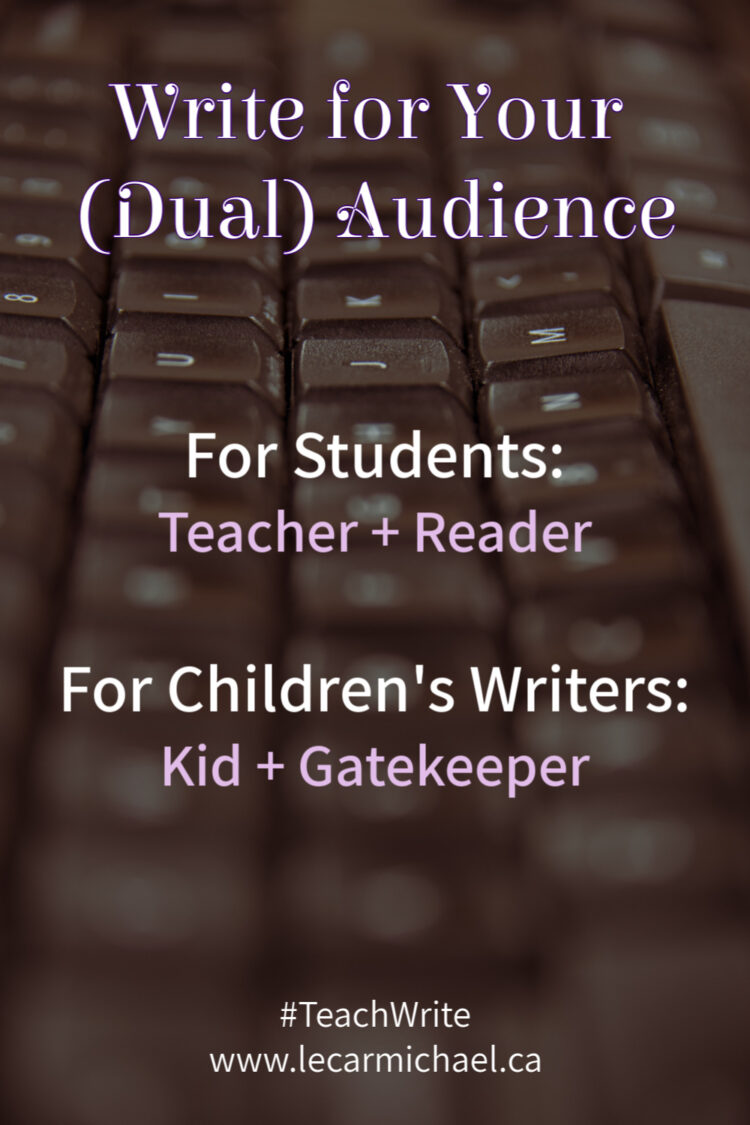 Welcome to Teach Write! This column draws on my 20 years’ experience teaching writing to kids, university students, and adult learners. It includes ideas and exercises that teachers can use in the classroom, and creative writers can use to level up their process.
Welcome to Teach Write! This column draws on my 20 years’ experience teaching writing to kids, university students, and adult learners. It includes ideas and exercises that teachers can use in the classroom, and creative writers can use to level up their process.
Last time we talked about why it’s important for writers to think about audience – the readers we are writing for. Today, let’s dig a little deeper into types of readers, and identify some questions we can use to pinpoint our approach to our target audience.
If you ask a student writer who she’s writing for, she’ll probably give you a funny look and say, “Um, my teacher?” Which is true, and there are special things to consider when we’re writing for someone who’s going to give us a grade. But the truth is that most writing assigned in classes has two audiences – the teacher, and someone else.
Depending on the assignment, that someone else could be classmates, professional peers, scholarship or grant committees, or the general public – a catch-all category that could include anyone from reluctant readers to devotees of the subject matter.
Professional writers face a similar duality, because we have to consider both our ultimate audience, the reader, and the gatekeepers – agents and editors – who decide which pieces of writing will be published and made available to those readers.
Under the umbrella of “readers,” professional writers have to determine whether:
- they are writing for adults or young readers
- whether or not the adults are familiar with the nonfiction topic or fiction genre
- whether the young readers are early readers, middle grade readers, young adults… and whether they’re confident or reluctant readers.
If you’re feeling overwhelmed at this point, don’t worry – you’re not alone! When considering audience, there’s an easy place to start. Ask yourself these questions:
- Who am I writing for? Children, teens, teachers, adults… It’s OK to be pretty general at this stage.
- Why would this person want to read my work? For information, entertainment, to assess your ability or assign a grade?
- What does this person already know? Are they likely to be new to your topic, or do they have some knowledge already?
- Does this person know more than I do about the topic? If you’re writing for kids, maybe not. If you’re writing for a teacher or grant committee, it’s entirely possible.
Hopefully at this point, you can see how thinking about your audience and what they need from your work will influence the way you approach your writing – no matter what genre or format you’re working in
Next time, we’ll begin taking a closer look at different kinds of audiences and how we can adapt our writing to ensure that, no matter what we’re trying to communicate, the message gets through. In the meantime, I’d love to hear your thoughts! Drop a note in the comments.
Hey, did you know I teach writing workshops? It’s true – I work with adult writers, teachers, and students of all ages. Contact me to learn more.